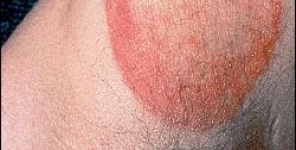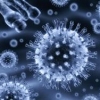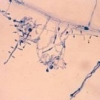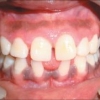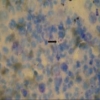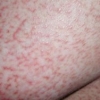Effetti antifungini di un laser al neodimio:granato di ittrio e alluminio a 1444 nm sull'onicomicosi: uno studio pilota
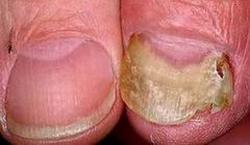 Sono state condotte diverse ricerche sui trattamenti antibatterici e antifungini assistiti dalla luce o dal laser. In questo studio abbiamo indagato l'attività antifungina dei laser Nd:YAG a 1444 nm contro l'onicomicosi, attraverso l'analisi microbiologica e la microscopia elettronica a scansione.
Sono state condotte diverse ricerche sui trattamenti antibatterici e antifungini assistiti dalla luce o dal laser. In questo studio abbiamo indagato l'attività antifungina dei laser Nd:YAG a 1444 nm contro l'onicomicosi, attraverso l'analisi microbiologica e la microscopia elettronica a scansione.
Su piatti di pesata in polistirene sono stati preparati i campioni raschiati dalle unghie dei piedi di 20 partecipanti con onicomicosi (confermata micologicamente) che poi sono stati trattati con un laser Nd:YAG da 1444 nm. I campioni sono stati analizzati al fine di rilevare la presenza di unità formanti colonie (CFUs), mentre la microscopia elettronica a scansione è stata eseguita su un'unghia trattata con laser Nd:YAG da 1444 nm.
Il tasso medio di riduzione raggiunto con il trattamento ad energia totale di 300 J è stato del 75.9% (intervallo: 33.3-100), mentre per il trattamento con energia di 450 J è stato del 85.5% (intervallo: 66.7-100): tuttavia, non è stata significativa la differenza nei tassi di riduzione delle CFU tra l'impostazione laser da 300 J e quella da 450 J.
L'analisi con microscopio elettronico a scansione ha rivelato numerose spore disintegrate a livello delle porzioni inferiori della lamina ungueale trattata con il laser da 1444 nm, mentre la parte superiore della lamina ungueale ha presentato solo spore leggermente più piccole e notevolmente disintegrate. I nostri risultati suggeriscono che il laser Nd:YAG con una lunghezza d'onda di 1444 nm ha effetti antifungini sull'onicomicosi. Tuttavia, dovranno essere condotte ulteriori indagini al fine di determinare gli effetti clinici e microbiologici a lungo termine di questo trattamento.
Storia della pubblicazione:
Titolo: Antifungal effects of a 1444- nm neodymium:Yttrium–aluminum– garnet laser on onychomycosis: a pilot study
Rivista: doi:10.3109/09546634.2012.7144 55
Autori: Min Ju Choi, Zhenlong Zheng, Boncheol Goo e Sung Bin Cho
Affiliazioni:Department of Dermatology and Cutaneous Biology Research Institute, Yonsei University College of Medicine, Seoul, Korea Department of Dermatology, Yanbian University Hospital, Yanji, China Clinic L, Goyang, Korea
Abstract:
Investigations of laser- or light-assisted antibacterial and antifungal treatments have been introduced. In the present study, we investigated the antifungal activities of 1444-nm Nd:YAG lasers against onychomycosis by microbiologic analysis and scanning electron microscopy. Scraped toenails from 20 participants with mycologically confirmed onychomycosis were prepared on polystyrene weighing dishes and treated with a 1444-nm Nd:YAG laser. The samples were analyzed for the presence of colony-forming units (CFUs) and scanning electron microscopy was performed using an toenail treated with the 1444-nm Nd:YAG laser. The mean reduction rate achieved by treatment with a total energy of 300 J was 75.9% (range: 33.3–100), and by treatment with 450 J was 85.5% (range: 66.7–100). However, the difference in CFU reduction rates between the laser settings of 300 J and 450 J was not significant. Analysis by scanning electron microscope revealed numerous disintegrated spores on the lower portions of the nail plate treated with the 1444-nm laser, while the upper portion of the nail plate presented only a few small and greatly disintegrated fungal spores. Our results suggest that a Nd:YAG laser with a wavelength of 1444 nm has antifungal effects on onychomycosis. However, further investigations should be performed to determine the long-term clinical and microbiologic effects of this treatment.
https://www.youtube.com/@djfdm
